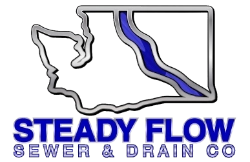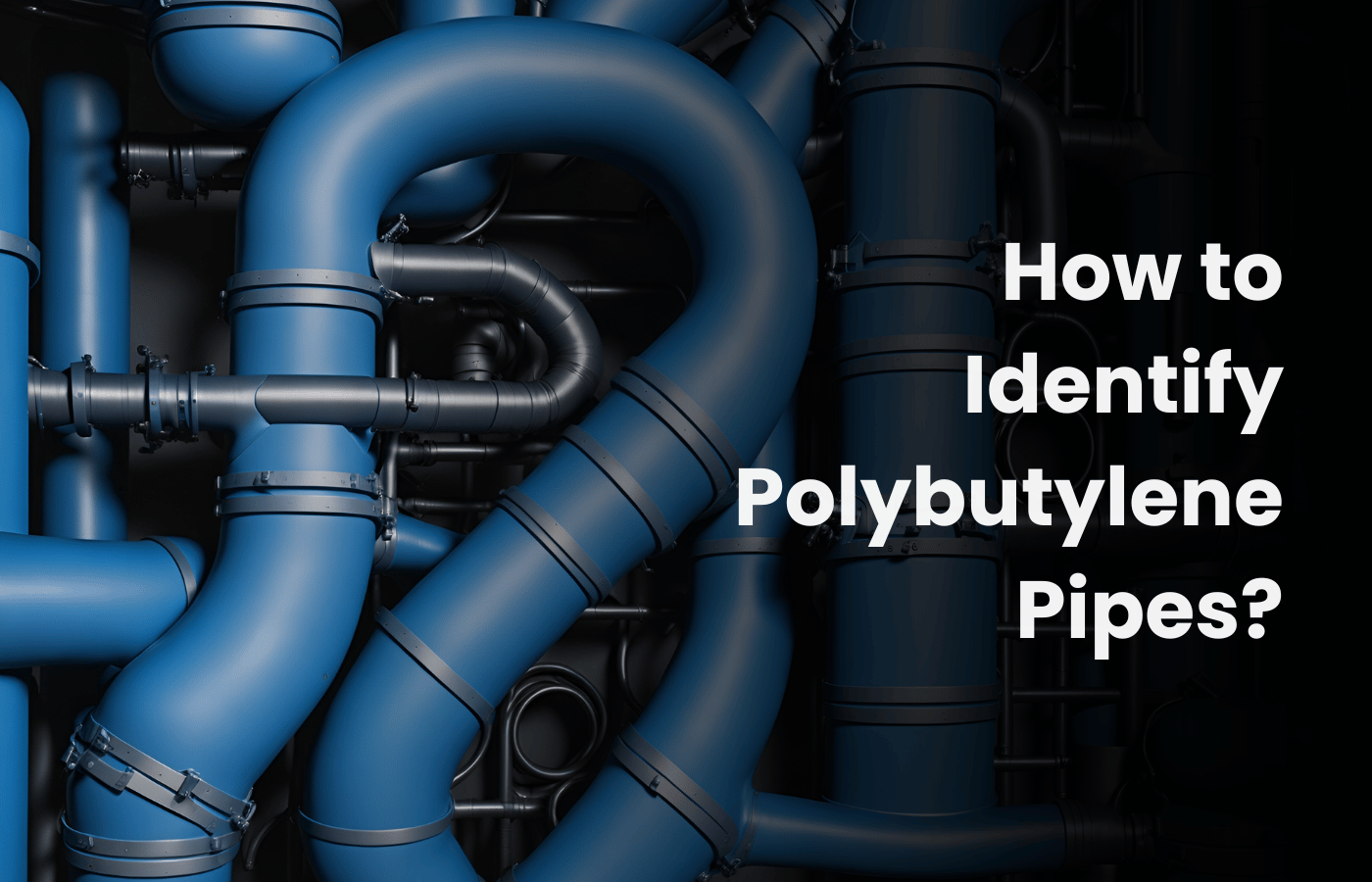How to Identify Polybutylene Pipes?
How to Identify Polybutylene Pipes?
If you’re wondering how to identify polybutylene pipes in your home, you’re not alone. Thousands of homes across the United States, especially those built between the late 1970s and the mid-1990s, were equipped with this once-popular piping. At Steady Flow Sewer & Drain, we help homeowners uncover these outdated plumbing pipes and make informed decisions before they cause major water damage.
What Are Polybutylene Pipes?
Definition and Background
Polybutylene (PB) is a type of polybutylene plastic that gained widespread use in residential plumbing systems during the late 20th century. It was promoted as a revolutionary material due to its flexibility, cost-efficiency, and ease of installation. Unlike metal plumbing pipes such as copper, PB piping could be snaked through tight spaces, drastically reducing labor costs and time.
Usage and Locations
PB was most commonly installed in homes built between 1978 and 1995. It was used for both interior water pipes and exterior main lines. Though it was extensively used across the United States, higher concentrations can be found in the southern states, as well as parts of the Pacific Northwest and Mid-Atlantic.
Advantages and Disadvantages
The material’s rise in popularity stemmed from its ability to handle hot and cold water, freeze resistance, and its non-metallic composition which made it immune to corrosion. However, these perceived strengths masked a deeper flaw in its long-term reliability.
Why Polybutylene Pipes Are a Problem
Chemical Reactivity and Failures
Despite their early promise, polybutylene pipes proved to be vulnerable to a serious issue—chemical reactivity. Chlorine and other disinfectants commonly used in municipal water supplies caused the inner surface of PB pipes to deteriorate over time. This breakdown leads to cracks and eventual water pipe failure.
Internal Degradation
Unlike metal pipes, PB does not corrode in a visible way. The failure occurs internally, often progressing silently until a pipe bursts. These types of failures are not only sudden but also costly. A tiny crack in polybutylene plumbing can release hundreds of gallons of water into your home.
Legal and Ongoing Risks
Due to numerous reports of pipe failures, several class-action lawsuits were filed, culminating in settlements exceeding $1 billion. Although manufacturing of polybutylene plumbing stopped in 1996, millions of homes still contain this risky material. Knowing how to identify polybutylene pipes is essential for protecting your property.
How to Identify Polybutylene Pipes in Your Home
Understanding how to identify polybutylene pipes can save you from expensive water damage and repairs. A proper inspection can determine whether your home plumbing system contains PB pipe.
Visual Characteristics to Watch For
- Color: Most often gray, but polybutylene piping can also appear in blue, black, white, or silver.
- Marking: Authentic PB pipe typically has “PB2110” stamped along the surface.
- Size: Standard residential PB plumbing pipes range from ½ inch to 1 inch in diameter.
- Flexibility: PB piping is more flexible than copper and bends easily.
- Fittings: Often secured with metal or plastic crimp rings.
Interior Inspection Points
- Near the water heater where piping is often exposed.
- Under bathroom and kitchen sinks.
- Behind toilets, especially near water valves.
- Along basement ceilings and crawl space joists.
- Around wall penetrations where only a short piece of pipe may be visible.
Exterior Inspection Points
- Where the main water line enters the structure.
- Around the water meter.
- At the main water shut-off valve.
Avoiding Misidentification
Some pipe polybutylene connections may be hidden behind escutcheons or drywall. It’s also crucial to avoid confusing PB with similar-looking materials:
- PEX: Color-coded red or blue, more flexible.
- PVC/CPVC: White or off-white, rigid plastic.
- Polyethylene: Black and very flexible.
- Copper: Metallic and rigid.
Not everyone knows how to identify polybutylene pipes without proper guidance. Visual checks should be paired with professional evaluations to confirm the presence of this material.
The Hidden Danger: Why Visual Checks Aren’t Enough
Even if polybutylene pipes appear intact on the surface, the internal structure could be failing. Over time, polybutylene plumbing systems weaken due to internal chemical reactions that are invisible without advanced inspections.
Inspection Limitations
There’s no reliable way to detect this degradation without a detailed plumbing inspection. Water pipe leaks often occur inside walls or beneath floors, making them difficult to catch early. Homeowners may not realize there is an issue until visible damage has occurred.
Insurance Concerns
Adding to the risk, many insurance companies either refuse to cover homes with polybutylene plumbing or increase premiums significantly. If your home contains PB plumbing pipes, early detection and replacement is key to maintaining coverage and value. That’s why it’s so important to understand how to identify polybutylene pipes before it’s too late.
Risks of Keeping Polybutylene Pipes
If you’re still questioning whether identifying polybutylene pipes is necessary, consider the consequences of waiting too long:
- Burst water pipes can flood your home without warning.
- Hidden leaks lead to mold, mildew, and structural deterioration.
- Property values drop when outdated or dangerous materials are discovered during a home inspection.
- Increased maintenance costs over time.
- Safety risks to residents and electrical systems.
PB piping failures can occur suddenly and unpredictably. Replacing them with modern plumbing materials like PEX or copper is the safest long-term solution.
What to Do If You Suspect Polybutylene Pipes
If you spot signs of PB pipe in your home, don’t delay. Begin with a detailed home inspection of your plumbing system. A licensed plumber from Steady Flow Sewer & Drain can help identify the presence and condition of any polybutylene plastic pipes.
Our team uses advanced tools to locate, analyze, and evaluate all visible and concealed plumbing pipes. Whether it’s a minor repair or full piping overhaul, we tailor our solutions to your budget and your home’s needs. We know how to identify polybutylene pipes efficiently and accurately.
Polybutylene Pipe Replacement: Your Best Long-Term Solution
When it comes to polybutylene piping, repairs are rarely effective long-term. The safest approach is to remove and replace all PB pipe in your home.
Why Replacement Makes Sense
- Eliminates the threat of unexpected pipe failure.
- Brings your plumbing up to modern safety standards.
- Increases resale value and marketability of your home.
- Improves overall water flow and pressure.
- Helps maintain or regain insurance coverage.
Recommended Replacement Materials
- PEX: Affordable, flexible, and widely used in today’s plumbing industry.
- Copper: Durable, long-lasting, and preferred by many home inspectors.
At Steady Flow Sewer & Drain, our replacement services are efficient, cost-effective, and minimally disruptive. We complete most projects with little downtime and leave your home cleaner than we found it. Our experts know how to identify polybutylene pipes and replace them with better alternatives.
Why Choose Steady Flow Sewer & Drain for Pipe Inspection and Replacement
Steady Flow Sewer & Drain is a trusted local business with a reputation for honest plumbing inspections and expert service. We are fully licensed and certified to perform pipe repair and replacement throughout the greater Seattle area.
What Sets Us Apart
- Accurate pipe inspections using modern technology.
- Transparent advice based on years of experience.
- Quick response times and professional technicians.
- Affordable solutions without hidden charges.
We understand the urgency that comes with identifying polybutylene pipes and replacing them before costly damage occurs. Our goal is to safeguard your plumbing system and ensure your peace of mind. When you need a team that knows how to identify polybutylene pipes and deliver lasting results, we’re here to help.
Contact Steady Flow Sewer & Drain
When your drains empty slowly, smell bad, or back up, you need a reliable sewer and drain company to fix it right the first time. At Steady Flow Sewer & Drain, our licensed and bonded company has built a solid reputation for effective and budget-friendly drain and sewer services. We prioritize customer satisfaction and guarantee our results.
As a locally owned and operated business, we take pride in serving the greater Seattle community. We are a sewer and drain expert that operates with 100% integrity. Our honest assessments of your drains and sewer line provide you with helpful information and peace of mind. We offer 24/7 emergency services and have the skills and equipment to handle any sewer or drain issue.
Call us today at (206) 984-8909
Based in Federal Way, Washington. Serving: Seattle, Tacoma, Puyallup, Bonney Lake, Kent, University Place, and nearby areas.
- Certified by Washington Labor & Industries (License: STEADFS792QE)
- Certified Contractors for Lakehaven Water & Sewer District
- Get a Free Estimate or Second Opinion on pipe repair or replacement
Read our reviews
Special Offers

Contact Our Team for an Appointment
Our trenchless company prioritizes your satisfaction with our work. We strive to be your trusted provider of all drain and sewer line services, and we look forward to serving you. For more information about trenchless pipe lining or to arrange an appointment, call us at Steady Flow Sewer & Drain or fill out the online form today.


